Skoda’s renown vRS performance line expands to its flagship SUV
Most of the time, we’re left wondering where is the ‘Sport’ in most Sport Utility Vehicles (SUVs) we have driven. For starters, they typically are bigger and therefore heavier than an equivalent sedan or estate. They also tend to be taller, with more ground clearance. This results in a higher centre of gravity which is as helpful to good handling as a hole in my head would help me think more clearly…
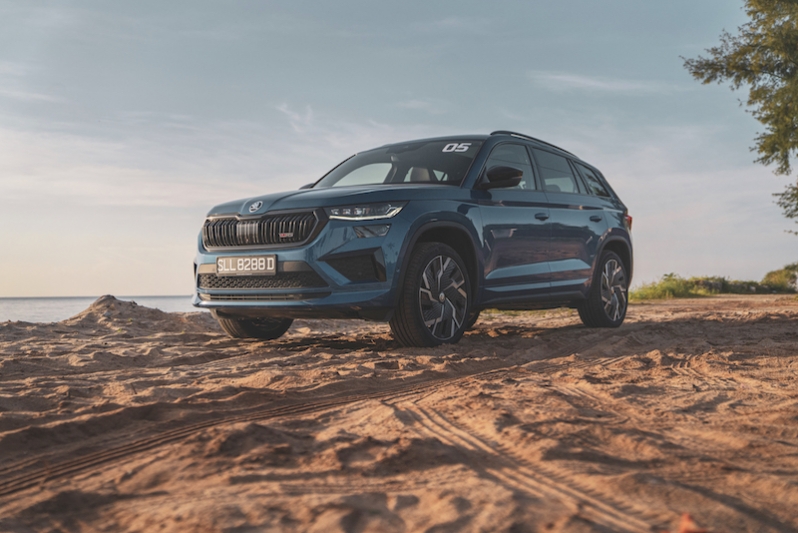
The SUV in question is the Škoda Kodiaq vRS. The latter suffix is the Czech carmaker’s performance sub-brand, not unlike BMW’s M division or Mercedes-AMG.
Perhaps, Škoda parent company Volkswagen’s GTI range might be closer to the concept of vRS. Speaking of which, vRS apparently stands for “victory Rally Sport” and the other fun fact is that the vee in vRS is actually supposed to be silent! So it’s simply referred to as, ‘RS’. In fact, in Škoda’s official communications, the the v is omitted altogether. It seems that not only is the ‘v’ silent, it’s invisible, too.
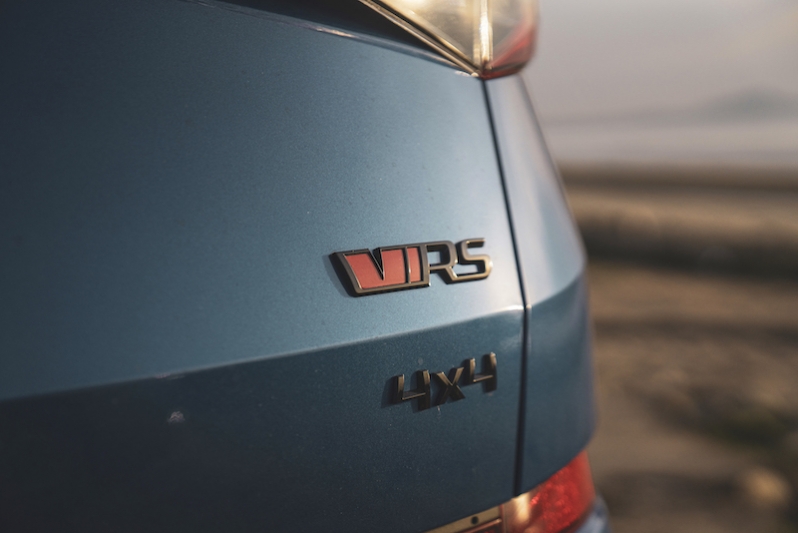
While I agree that brands are free to do whatever they like with how their products are named, I feel that ‘vRS’ is searched more by those interested in performance Škoda models. So in the interest of search optimisation, I’ll be sticking to vRS for now. Such are the times we live in…
Škoda has always been a brand that does things a little differently. Past models are remembered for little quirks and features such as removable boot light that doubles as a magnetic flashlight. Pop it back into its receptacle where it automatically recharges while illuminating the luggage compartment. Another Škoda hallmark are the umbrella holders in each door. The only other brand that I’m aware of which has this feature is Rolls-Royce.
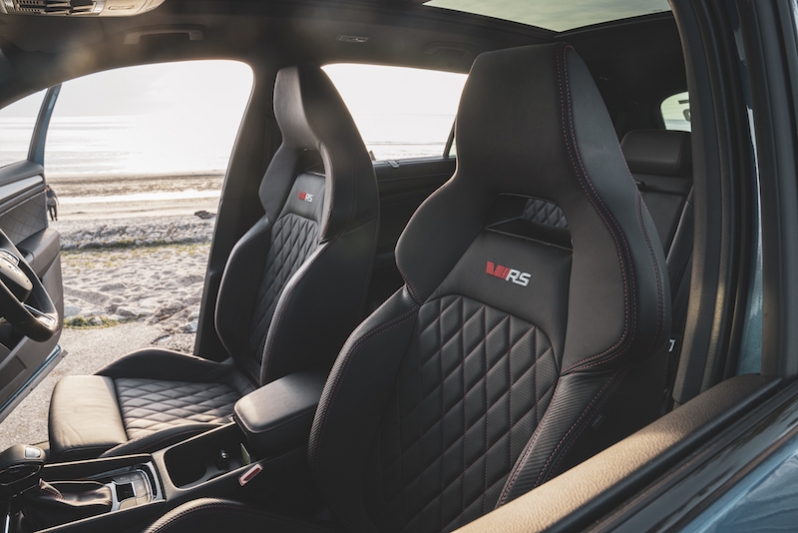
Look around a Skoda's boot and interior and you will find lots of hooks to hang plastic bags from. The luggage bay can also be configured in myriad ways to compartmentalise smaller loads and keep them from rolling about. But the Kodiaq in particular ups the practicality (and graciousness) ante further with built-in door protectors that magically appear as you open the doors and then retract out of sight when closing, so you don't inflict door dings unto yourself and others.
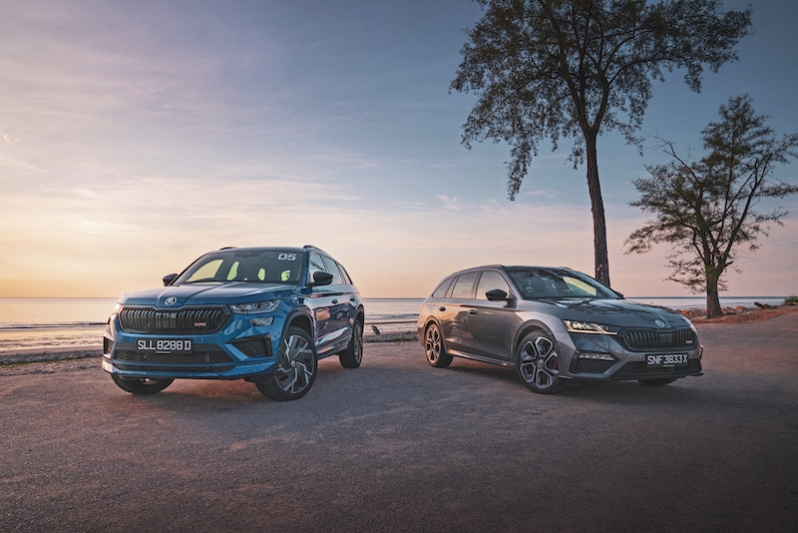
The other big Škoda hallmark is that its cars always seem to be half a segment larger than the corresponding models from the other VW Group brands like Audi, Seat and, Volkswagen of course. The Superb for example, has a longer wheelbase than a VW Passat. The Octavia has always offered more interior space than a Golf while the Kodiaq here is large enough to be fitted with a third row of seats while the VW Tiguan, which shares the same platform, does not.
So in this sense, the Kodiaq still ticks all the boxes to retain its, Škoda-ness, if you will. This, however, is more than can be said of its sportier sibling, the all-new Octavia vRS which we took turns driving throughout the trip. For the first time in a decade, the Octavia vRS is available as a Combi (Škoda-speak, for wagon). While the Octavia Combi vRS is undoubtedly stylish and could be mistaken for an Audi RS Avant (Audi-speak for wagon – every brand has their own name for it), it seems to have lost a bit of its soul along the way.
Can a Kodiaq be a real vRS?
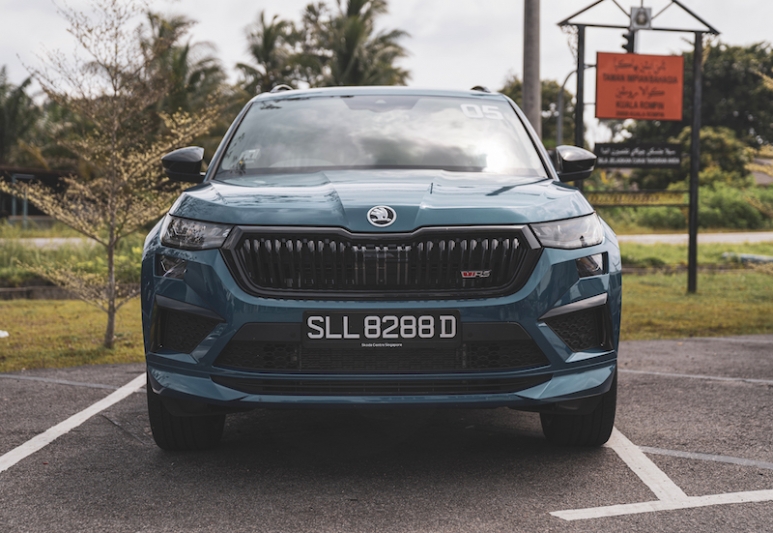
Coming back to the Kodiaq, the vRS treatment starts with the same engine as the Octavia vRS and Mk8 VW Golf GTI, a 2.0-litre turbocharged engined that's tuned up to 245hp and 350Nm. This power is then transmitted to all four wheels via a 7-speed DSG double-clutch gearbox.
In the styling department, the Kodiaq vRS gets 20-inch wheels which are admittedly my least favourite feature on this car. Škoda calls this design the Sagitarius wheel and supposedly have aerodynamic covers, but to my eyes, they look like they belong on an EV. Instead, I would rather see a design that better showed off the red vRS brake calipers residing behind the wheel.
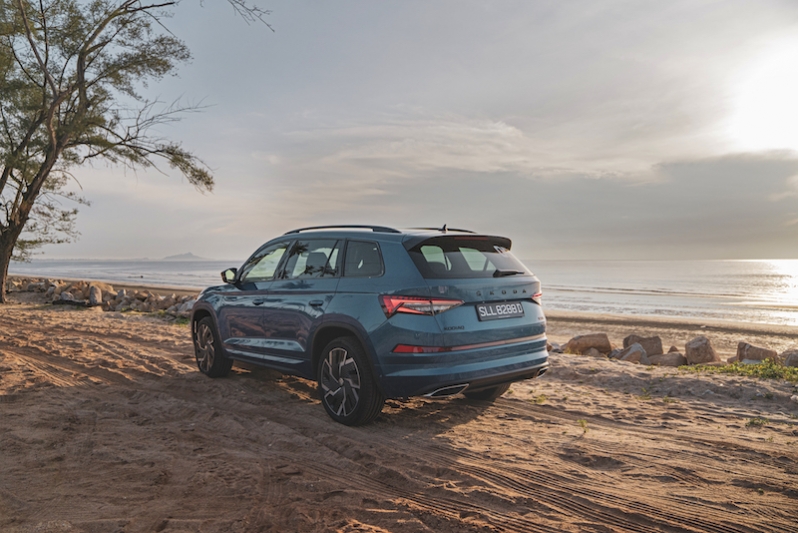
Fortunately, the rest of the car ticks all the right boxes with black accents for the grilles, window frames, and roof rails to give the Kodiaq vRS an appropriately sporty demeanour.
Full LED matrix headlights are standard on the Kodiaq vRS. When driven on roads that are not lit by street lamps, these headlight automatically switch to high beam, yet are clever enough to manipulate the individual LED beams to avoid dazzling on-coming traffic. Depending on the weather and road conditions, these headlights also automatically adjust for the optimal level of brightness and beam spread.
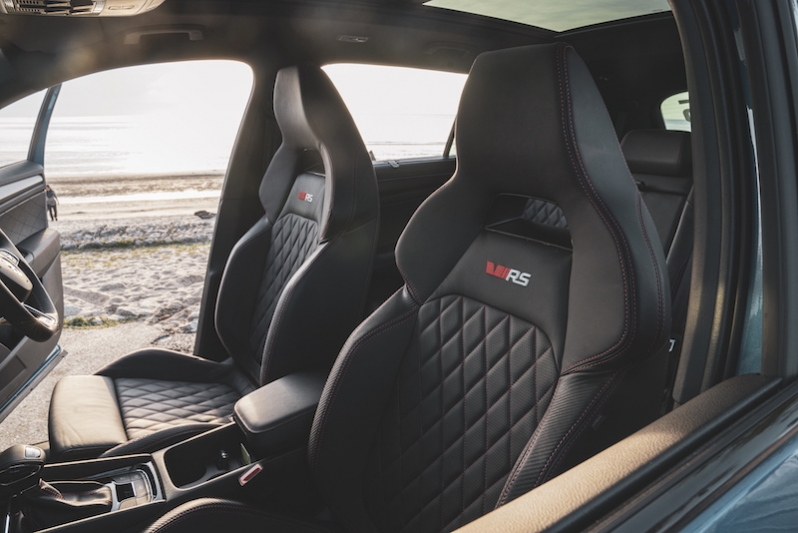
Inside, the front occupants are treated to vRS-specific diamond cross leather sports seats that are as comfortable as they are supportive. For good measure, they are also ventilated as well as heated.
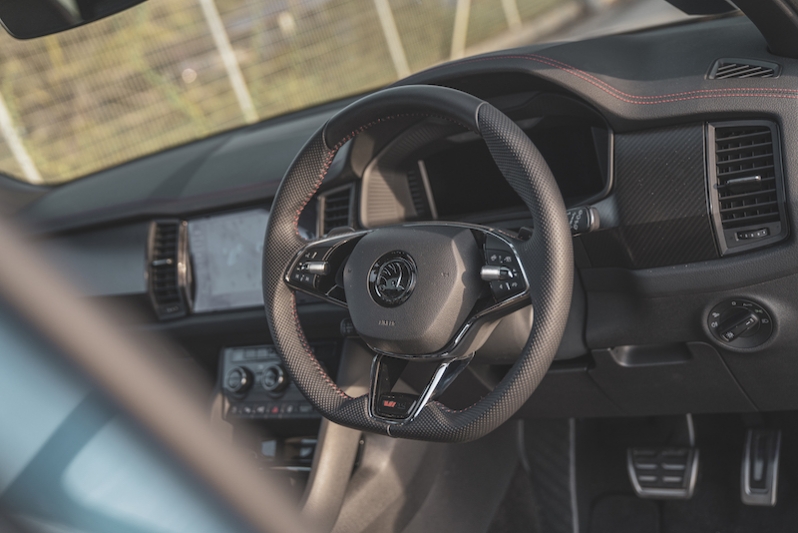
We drove the Kodiaq vRS on the return leg from Kuantan to Singapore mostly over some of Malaysia’s most fabulous twisty and undulating b-roads. Using the Octavia vRS as an immediate reference point, we found that the big SUV was perfectly adept at keeping up with the low-slung liftback and Combi Octavias.
While the Kodaq’s extra weight and higher centre of gravity took some of the edge off its agility, it more than made up for it with ride comfort and silence. Part of the charm of the b-roads in Malaysia is that they are occasionally pock-marked with potholes or patched up tarmac. The less-than-perfect surfaces will give any suspension system a workout, yet the Kodiaq simply smothered these bumps with impunity. In comparison, the Octavia vRS was found to transmit quite a bit of road noise to the cabin. The Kodiaq in comparison was quiet enough for us to savor the Canton sound system with music streamed over wireless Apple CarPlay.
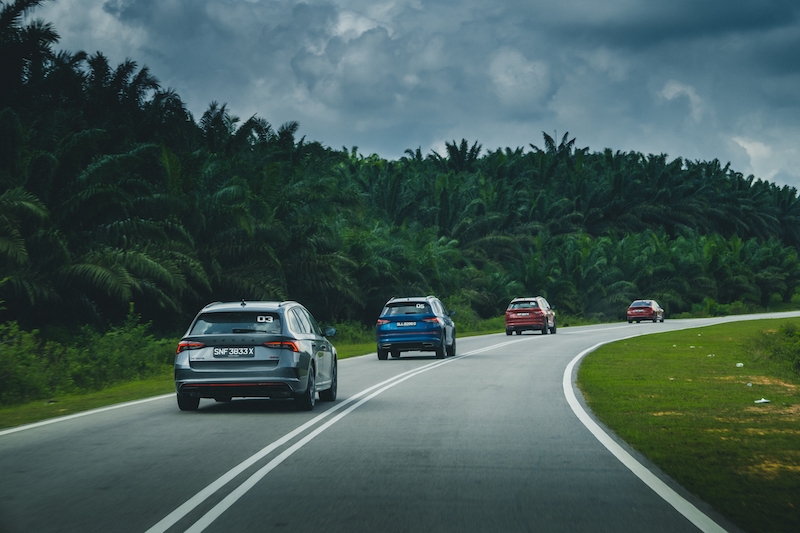
Besides the wheels, my only other gripe with this car is that the wireless charger is a tad too small for the latest Max-sized smartphones. In this regard, the Octavia had a better sized tray but would cause my iPhone 12 Pro Max to overheat while charging.
Both the Octavia and Kodak vRS feature Driving modes but the four-wheel drive SUV has an additional off-road mode (you can see it just above the traction control button) that sets the stability control and torque split to suit various levels grip available. There’s also a hill-descent control steep and slippery inclines.
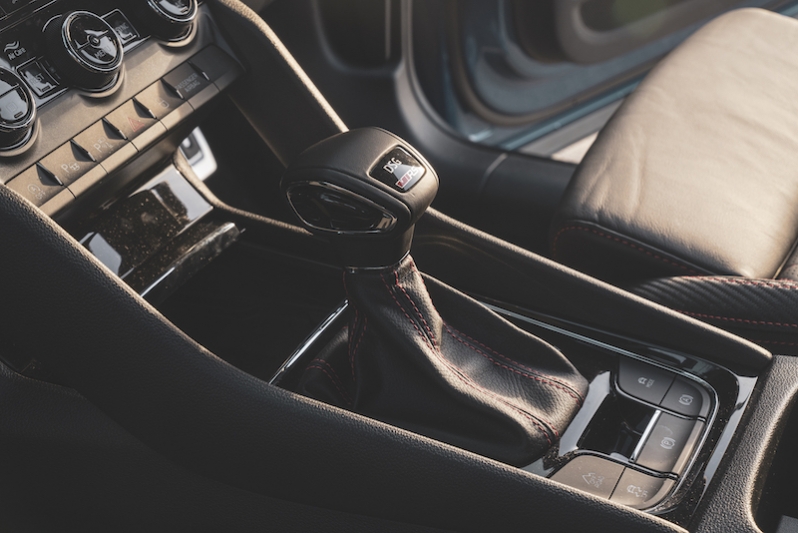
Overall, the Kodiaq vRS won me over as the Škoda of choice. As much as I wanted to love the Octavia Combi vRS, and lobbied to bring it back, the SUV gives up very little in the way of outright performance but gives back so much more in usability, breadth of talent and retains that all-important Škoda-ness that stand these cars apart from their competitors.
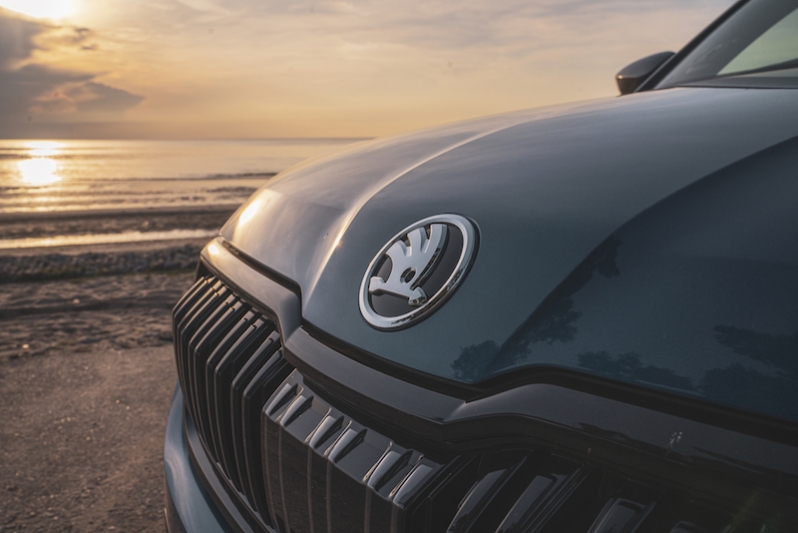
TECH SPECS
Skoda Kodiaq vRS 2.0 TSI
Engine: 1,984cc, in-line 4 turbocharged
Power: 245hp@5,250-6,500rpm
Torque: 370Nm@1,600-4,300rpm
Transmission: 7-sp double-clutch automated, 4wd
0-100km/h: 6.6 seconds
Top speed: 233km/h
VES: C1
Base price: $175,900 w/o COE
Contact: Škoda Singapore
+It does everything well. Still feels like a Škoda
- Ugly wheels and small wireless charging tray
